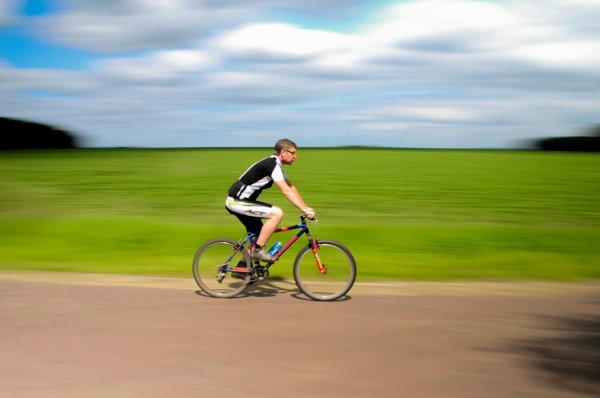Cycling season is here! While biking is considered a low-impact sport, the repetitive mechanics of cycling combined with high reactive forces between your foot and bike pedal create high pressure on your lower extremity and can predispose you to knee pain.
Knee pain is the most common lower-body issue among cyclists with as many as 65 per cent experiencing it. Most knee pain is a result of overdoing it when you ride for longer periods and harder than your condition permits. This tends to strain and inflame your connective tissues.
Activa encourages you to consider safety when biking to prevent reduced training capacity or limited performance with these 4 cycling safety tips.
1. Check your saddle height and position
Start by being mindful of your form and consider the safety of your equipment and bike position for long distance cycling. A good bike fit is essential for preventing most causes of knee pain.
Knee pain right on the kneecap (patella) is typically the result of powerful cycling quads. As you’re pumping the pedals, your quad muscles may deliver too much force across your patella. A saddle that is placed too low may cause your knee angle to be too tight at the top of the stroke, which increases forces pulling the patella against the femur — increasing the likelihood of tendonitis and harmful stresses in the cartilage behind the kneecap. Riding with your saddle too far forward can also cause knee pain in the front.
Tip for saddle height: Have a seat and rest your heel on the pedal with the pedal in the 6 o’clock position. The knee of that leg should be straight at a 20- to 25-degree knee bend when clipped in.
Tip for saddle position: Your saddle should be positioned so the bony bit below the kneecap is above the ball of the foot, which should be above the pedal.
2. Avoid over-extension of the knee
Pain behind the knee is less common than in the front and is generally caused by over-extension of the knee. This pain is common among cyclists who spend a lot of time in fixed gear using their hamstrings to decelerate pedal stroke. This can put too much pressure on your biceps femoris tendon (hamstring muscle that runs down the back of your leg toward the outside of your knee).
Tip: Check your saddle position, as it may be too high or too far back. Try lowering the saddle a bit or moving it forward in relation to the handlebars. Give your legs a break with lighter resistance pedaling to relieve pressure.
3. Placement of your feet on the bike pedals
When you feel pain on the inside of your knees, look down at your feet. Cleat placement and position affect how far apart your feet are when pedaling.
Tip for foot placement: The spacing between your feet should be enough that your knees to your pedals are moving vertically without pushing your knee inward or outward.
4. Alignment of your cycling shoes or cleats
Pain on the outside of the knee is often caused by iliotibial (IT) band syndrome, a stabbing pain that happens when the IT band (fibrous connective tissue band that runs from the hip along the thigh to the tibia) becomes stressed and inflamed.
Misaligned cleats can cause the foot to be excessively toed in. Cleats that are placed too far to the outsides of the shoes can also cause too narrow of a stance on the bike.
Book your appointment with Activa Physiotherapy Ottawa today to relieve any knee pain you may be experiencing from biking and review cycling safety to protect you from cycling injuries this biking season.
